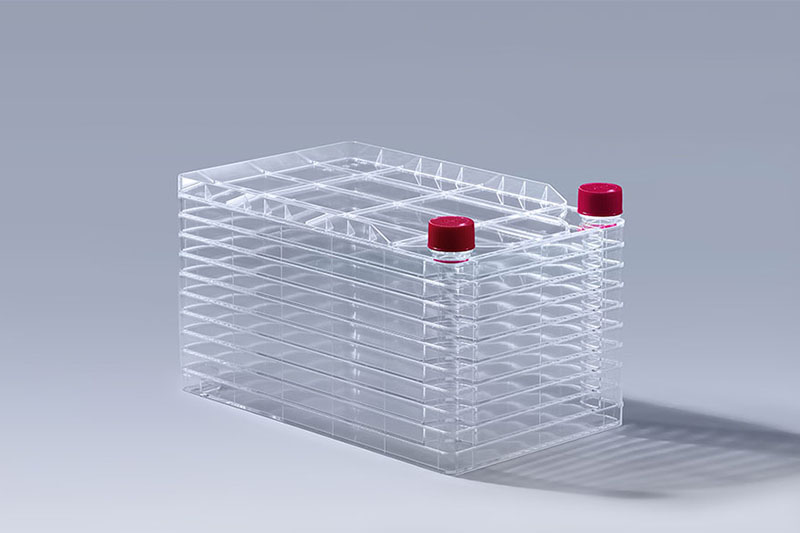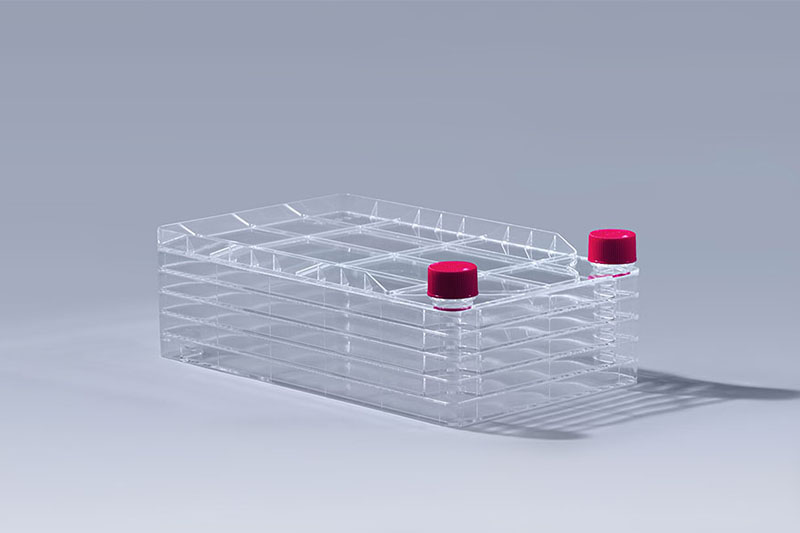When culturing cells, exogenous contamination is a very troublesome thing, especially in large-scale cell culture, if it is contaminated, the loss will be more serious. As a common container for large-scale cell culture, the cell factory can reduce the risk of exogenous contamination of cells through a dedicated pipeline system.
FuDau 10-Layers-Cell-Factory
The process of culturing cells involves various operations such as addition of medium, solution transfer, etc. During the operation, it is also the process that is most likely to cause external contamination. Every time the lid is opened, the risk of contamination increases. The cell factory adopts a multi-layer structure design, which has the advantages of small footprint and large culture area.
FuDau 5-Layers-Cell-Factory
In addition, this kind of culture container has another feature, that is, it can realize the closed transfer of liquid through a special pipeline system, and transfer the medium or cells directly through the connecting pipeline in a sterile environment, which greatly reduces the amount of externalities during the cell culture process. Reduces the risk of source contamination, thereby increasing cell culture efficiency. Its accessories include liquid transfer caps, small port conversion caps, CPC adapters, tee pipes, silicone tubes/hot melt tubes, ECS quick connectors, etc., and multiple cell factories can also be connected in series.
Of course, in addition to the closed cultivation of cells with the special pipeline system of the cell factory, we also need to strictly follow the aseptic operation during operation, such as personal hygiene, sterile environment, etc. This is what every operator needs to keep in mind at all times. of.
The FAI climbed 5.9 percent year-on-year in the first 11 months of 2018, quickening from the 5.7-percent growth in Jan-Oct, the National Bureau of Statistics (NBS) said Friday in an online statement.
The key indicator of investment, dubbed a major growth driver, hit the bottom in August and has since started to rebound steadily.
In the face of emerging economic challenges home and abroad, China has stepped up efforts to stabilize investment, in particular rolling out measures to motivate private investors and channel funds into infrastructure.
Friday's data showed private investment, accounting for more than 60 percent of the total FAI, expanded by a brisk 8.7 percent.
NBS spokesperson Mao Shengyong said funds into weak economic links registered rapid increases as investment in environmental protection and agriculture jumped 42 percent and 12.5 percent respectively, much faster than the average.
In breakdown, investment in high-tech and equipment manufacturing remained vigorous with 16.1-percent and 11.6-percent increases respectively in the first 11 months. Infrastructure investment gained 3.7 percent, staying flat. Investment in property development rose 9.7 percent, also unchanged.
 English
English




















































